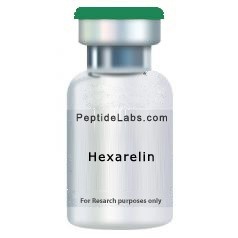Hexarelin is an effective and cardioprotective peptide growth hormone secretagogue that can bring about growth hormone secretion, thanks to the amino acid sequence found therein. This means that the production of growth hormones won’t be shut down because of it, either. This is basically why hexarelin is a much better option compared to other growth hormones, in general.
There are six amino acids inhexarelinthat can release growth hormones as needed. Some of the different effects that may come about with this include higher levels of mitosis, bone mineral density, muscle mass, fat loss, elasticity and connective tissues.
The action mechanisms of this protein aren’t really known yet, but it is known to act on the hypothalamus and pituitary gland in the same way that its predecessors do. The only difference is that it uses 2-Methyl-Trp instead of Trp.
Various studies have already been conducted in order to understand hexarelin better. These studies have also reported various positive effects coming from it, like better muscle strength, muscle mass, endurance, muscle strength, wound healing and joint rehabilitation. What hexarelin doesn’t do, though, unlike GHRP-6, is induce food consumption. This is because it doesn’t have the ability to increase grehlin levels. Grehlin is basically responsible for emptying out the gastric system and inducing hunger. Hexarelin does seem to be effective at releasing growth hormones in the long term, though, especially when compared to GHRP-6.
Other things that hexarelin can provide include protection and healing for cardiac problems. After research test subjects administered hexarelin for a week, they were able to prevent several things, such as hypophysectomy; high diastolic pressure; the lack of creatine kinase and prostacyclin release; coronary vasculature reactivity; and coronary perfusion pressure. It can also improve the recovery of contractility, not because of growth hormone mediation, but because of heart receptor activation.
Still, nobody knows how hexarelin might effect the brain just yet. This is why current studies are trying to figure out its potential at protecting the CNS of research test subjects after injuries. |




 Bestropin
Bestropin


